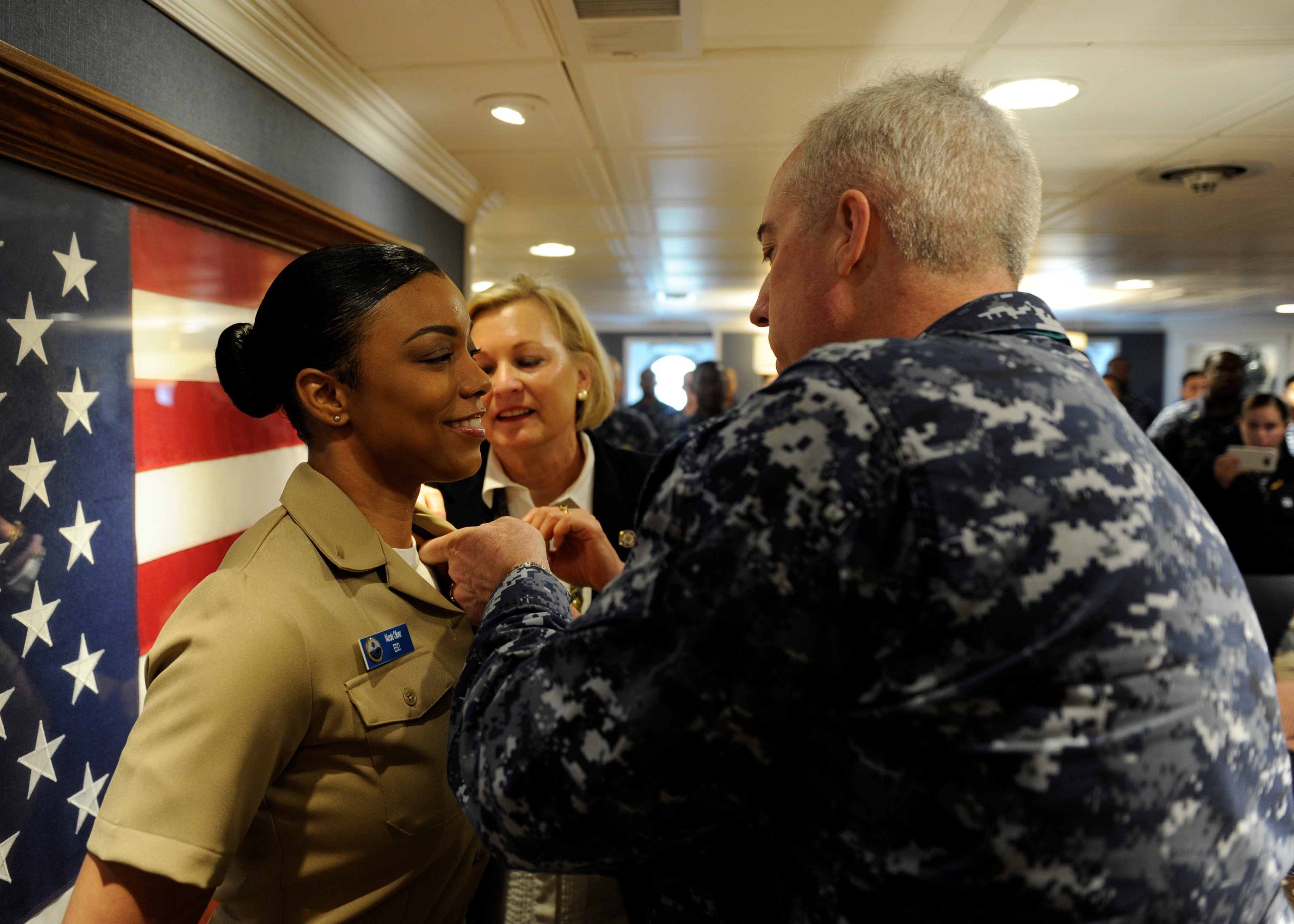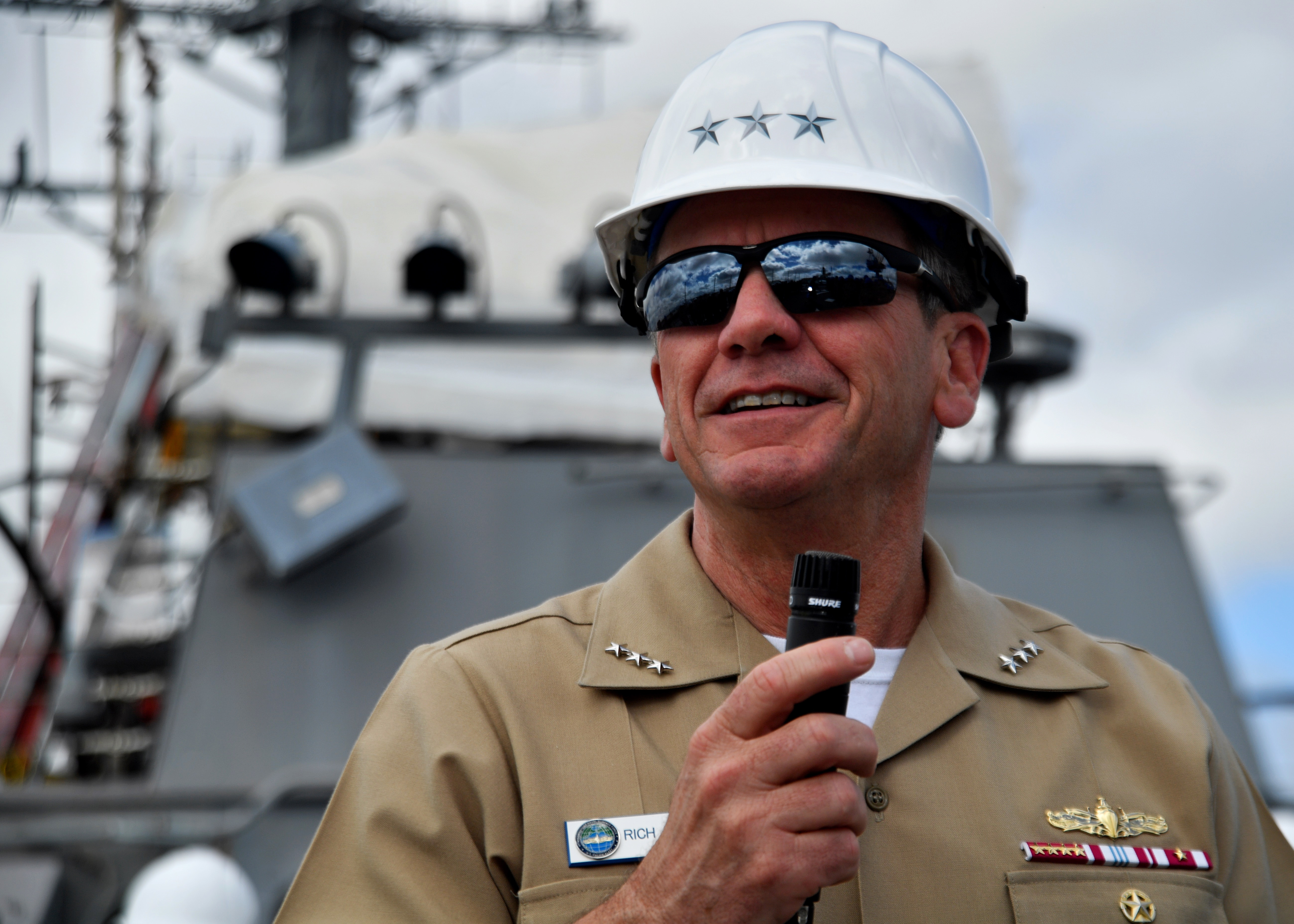
This post has been updated to specify that there are no restrictions on who an individual ship commander could qualify as an officer of the deck.
The Navy is tightening up who can be qualified as a surface warfare officer and reserving time on the bridge for officers who are on a path to command warships, the commander of Naval Surface Force told USNI News this week.
Faced with a limited amount of bridge time for new surface officers, Vice Adm. Richard Brown issued an extensive set of new instructions with the restrictions that would keep limited duty officers, chief warrant officers and senior enlisted from obtaining a SWO pin, he told USNI News this week.
“What we are really going after is increasing at-sea experience in ships,” he said in a telephone interview on Wednesday. “Part of increasing that experience is getting the reps and sets in the pilothouse driving ships. If you have other designators… competing for time in the pilothouse to earn their OOD letter — which is the prerequisite for SWO qualifications – then that really goes against what I’m trying to do in the surface force.”

In the past, limited duty officers and chief warrant officers – experts in a specific technical specialty – were allowed to earn a SWO qualification but would never eventually command a warship.
“To put it in aviation language, a maintenance LDO in an aviation squadron doesn’t go up to the skipper in the squadron and say ‘Hey, skipper I need to bring this F-18 up for a couple of spins so I can get my wings of gold.’ It just doesn’t happen,” Brown said.
“I’m removing that pressure from commanding officers where they feel they have to let chief petty officers or limited duty officers to stand these valuable and scare bridge times to earn their OOD letters to eventually get their SWO qualifications.”
The decision was contained in an extensive instruction issued earlier this week that tightens up the path for officers on the track for command of a warship at sea. In addition, the instruction eliminates a time limit to earning a SWO pin and arguably makes it easier to revoke the qualification.
Brown said there would be exceptions made for smaller vessels like mine countermeasures ship and Cyclone-class patrol craft for commanders to qualify other sailors for officer watch duty.
The instruction also formally outlined a revised SWO career path that includes more schooling for junior officers before they report to their first ships and additional evaluations for SWOs throughout their careers that were announced to the fleet last month.
“We must be realistic in confronting the systemic shortfalls that they revealed in core proficiencies across the junior qualified members of the force. We as a community can and must tackle our deficiencies and ensure there is meaningful experience behind our qualification letters,” Brown wrote in his June 6 message.
The new outlook on SWO training is part of the aftermath of the two fatal collisions in the Western Pacific of USS John S. McCain (DDG-56) and USS Fitzgerald (DDG-62) that killed 17 sailors. Two internal Navy reviews found the sailors on both bridges lacked training and bridge experience and recommended changes in how sailors were trained in basic seamanship and navigation.

The emphasis on time at sea and also follows an evaluation of 164 qualified officers of the deck throughout the fleet that found only 29 of those tested passed with no concerns.
“In the review and the aftermath of 2017, I really believe that we lost our way in who we allowed to earn those critical qualifications,” Brown said. “Fifteen years from now when you see an officer wearing a SWO pin, you’re going to know that that officer was at one point on track for command at sea. You’ll know it wasn’t a qualification that was obtained because you needed it for a promotion board.”
The restrictions on the qualification comes as the surface force has been swamped with junior officers vying to get their SWO qualifications with up to a dozen or more ensigns aboard a ship and fewer opportunities to stand watch.
“You have a bottom heavy force, a considerable number of ensigns that need to get trained,” former guided-missile destroyer commander Bryan McGrath told USNI News on Thursday. “There are not alot of variables that can be [changed] in this equation and this is one of them. This is a scarcity issue and this is a reasonable response.”





